
QUICK FACTS:
Are Tiny Houses Legal In Hawaii: YES
Tiny House Costs In Hawaii: $40,000 – $200,000
Tiny House Friendly Cities: Honolulu, Pearl City, Lihue, Kaneohe
Tiny Pacific Houses Honolulu, HI
Hawaii native Brandon Hardin was introduced to the Tiny House movement by serving at Opportunity Village in Eugene, Oregon, while he was playing football. After his experience at Opportunity Village, Brandon was inspired to start Tiny Pacific Houses. What began as a business venture to help the homeless population in Hawaii has since grow into much more. Today, Tiny Pacific Houses offers 25 different customizable tiny home models available for purchase from anyone in Hawaii.
Habitats Hawaii HIlo, HI
Habitats Hawaii is run by Barrie Rose and Johanna Tilbury, residents of Hawaii’s Big Island. Their business is located at Akua Aina farm, a natural farm on the Hamakua Coast. The company offers eight different tiny home models called “habitats” that are ready for purchase. Every habitat is custom designed in accordance with the company’s guiding philosophy of living lightly and minimally on the earth. Each design is built on a steel chassis with wheels and is able to be moved wherever the owner should choose. The models also contain built-in decks, platforms, and lanais that provide a luxurious outdoor area to soak in the beauty of the island.
Paradise Tiny Homes Hilo, HI
Siblings Dan and Ellie Madsen, the creators of Paradise Tiny Homes, have strong roots in the world of design. Dan, who is also the owner of Hilo’s Oasis Skate Shop and Mixed Plate Designs, has become a seasoned craftsman through his work building skate board ramps. He eventually upgraded to designing tree houses, which led to creating tiny homes. Ellie, who also owns Ellie K. Design, has a long background in property management and interior design. The brother and sister team has created four different models available to purchase and customize, with more layouts on the way. A full house takes about four to six months to complete. Current models are all one bed and one bath.
Mockingbird Tiny Homes Kealakekua, HI
Mockingbird Tiny Homes is owned by husband-and-wife duo Chad and Kelly. They began their marriage in a 250-square-foot studio, which was the beginning of their passion for minimalism. They worked to adopt a lifestyle that centered more on the relationships around them than on their material possessions. Today, the couple serves as active participants in a nationwide tiny house movement that supports living more simply and intentionally in the day to day. Chad and Kelly build fully customizable designs. You can contact them through their website to request a layout.
Hawaiian Trailers Kailua-Kona, HI
Hawaiian Trailers manufactures several models for purchase. For tiny homes, the company has gooseneck, super wide, and flatbed trailers available. Additionally, they carry car haulers, dump trailers, equipment trailers, and tilts. If you are looking for a specific trailer, you can contact the PJ trailers staff through their main website.
Aluma Trailer Dealers Kapaa, HI
Aluma Trailer Dealers has several locations where trailers are manufactured across the United States. There are various models available to be exported to their location in Kapaa, Hawaii, including flatbed and utility models which would be most functional for tiny homes.
Hawaii Tiny Houses For Sale
With beautiful weather, fun island culture, and unlimited beach access, the state of Hawaii is an ideal place to live tiny long term. There are endless options to purchase your own four-walled paradise in the Aloha state.
Living tiny in Hawaii just makes sense. The state comprises eight major islands and 124 smaller islets. These islands stretch across a 1,500-mile crescent, from the uninhabited Kure Island in the west to highly populated Big Island in the east.
The general lifestyle of the state’s inhabitants aligns with the tiny living community, reflecting its ideals of peace, minimalism, and simplicity. The state also boasts tons of trails and parks for a rich taste of nature. The Hawaii State Park System is composed of 50 natural parks to explore with your family. These parks offer various group recreation and cultural enlightenment opportunities for any age and demographic. The accessible landscapes range from diligently kept park grounds to wild forests with rugged trails. The land encompasses approximately 30,000 acres on five of the state’s major islands. You can explore state parks while living on the Islands of Oʻahu, Hawai’i, Kauaʻi, and Maui.
If you’re wanting to purchase your own tiny house on one of Hawaii’s many peaceful islands, check out these local listings:
Hawaii is a magnificent place to own a tiny home, but it’s also one of the most popular US states to vacation in. If you feel inspired to try tiny living but don’t want to commit to the lifestyle long term, renting a tiny home through Airbnb might be right for your next family getaway to paradise.
There are a few areas in the state that take tiny living to the next level. The Puna region of the Big Island is specifically renowned for its off-grid, back-to-the-land attitude. This agrarian, simplistic philosophy has thus brought many intentional living communities to life throughout the east side of the Big Island.
Living in a tiny house community is beneficial for a myriad of reasons. It gives you access to shared resources, produces a heightened sense of accountability and companionship with others, and allows for personal growth.
Check out some of the tiny house communities located in Hawaii:
Cinderland Eco Village
Created by Jezuz in 2000, Cinderland is a fully off grid, intentional living community located in the jungle-like landscape of the Big Island. The group focuses on self-sustainability, organic gardening, environmentalism, cultural education, physical and interpersonal healing, and permaculture. Its leaders work to encourage simplistic, healthy, natural living amongst all members.
The close-knit community sits about 20 miles southeast of Hilo and 1.5 miles from the coastline in the center of an abundant fruit forest. The main house is minutes away from the Punaluu black sands beach, crystal tide pools, volcano steam vents, warm ponds, and several health food stores and local farmers’ markets on Papaya Farms Road.
Cinderland has a fully communal living style, so joining the group is a commitment to companionship. Housing options span 3 acres of farmland and include yurts, tee-pees, domes, treehouses, tents, hammocks, tiny mobile homes, recreational vehicles, converted buses, and natural built clay or wooden structures. Housing is shared with multiple individuals living in each dwelling. Residents and neighbors of the community also share meals together. Members gather in the kitchen each morning and night for meals like the community’s infamous Taco Tuesday, potlucks, group dinners, and celebrations. Cinderland’s kitchen also contains an in-ground fire pit, a piano, and several bunk beds.
Payment for living in the community is $300 for the first month. After that, members have the option of agreeing to a labor exchange in order to replace the monthly fee. The group currently has 38 members and is open to accepting new people with approval by the community owner, who you can contact through their website.
Kalani Mua Big Island Retreat Center
The Kalani Mua retreat center is a getaway experience open to hosting temporary guests. The group is specifically designed to give eco tourists an empowering, peaceful, growth-inducing transformation. The missions of the Kalani Mua center are to encourage growth experiences for guests, nourish local and global communities by promoting sustainability, abundance, and wellness, celebrate diversity, and show respect for culture and sacred lands.
Each guest at the retreat center has the option to select either a contemporary or bamboo-style small cottage to live in for the duration of their stay. They can also participate in the activities and wellness services the community has to offer.
Residents and guests can participate in daily yoga, spa and wellness sessions, art and dance classes, group meals, permaculture gardening, community workshops, special events and celebrations, and much more. You can book your stay at the Kalani Mua retreat center by emailing guestservices@kalani.com.
We encourage you to look for your own social groups and comment your findings at the bottom of our page. Or better yet, start your own group and tell us about it!
Tiny House Hawaii Group
The Tiny House Hawaii community was started by the creators of Simple Tiny Houses. This Facebook page allows people to share ideas and information about living in tiny houses in Hawaii, post local houses for sale, explore intentional living resources, give tips for design and building information, present group fundraisers, and share other information.
Hawaii Permaculture Group
This Facebook group is for anyone interested in Permaculture throughout the state of Hawaii. Permaculture covers many ways of living in an eco-friendly way, which includes the tiny house life. This group is great for connecting with like-minded individuals. It was created after the Oahu Permaculture Convergence held at Waihuena Farms. Anyone can join and is invited to share permaculture questions, photos, events, and project links on the page.
Building laws regarding tiny houses in the state of Hawaii can vary by city, county, and island. Some areas of the state’s 137 islands are accommodating to tiny living. Others make it harder to legally adopt the lifestyle.
However, the Hawaii Statewide Traffic Code 291C does provide a general statewide classification for the dwellings. This code classifies tiny houses as house trailers. House trailers are legally defined as a trailer or semitrailer designed, constructed, and equipped as a dwelling or sleeping place that is also equipped for use as a conveyance on streets and highways.
Can I Make My Tiny House On Wheels Legal In Hawaii?
Tiny houses on wheels are classified as house trailers throughout the entire state. These house trailers can be used for travel and as independent dwellings stationed on private property.
The legality is simple. It’s legal to live in a tiny house on private property without any kind of permit.* But these types of things can often be affected by even minor details, so connect with your local building code enforcement before starting.
Regardless, your tiny house must meet the requirements of Codes 291C-1 and 291C-112. The requirements for tiny houses in Hawaii are:
- Your house trailer must be registered and licensed by the Hawaii DMV
- You must park your house trailer on private property that you own, or have explicit permission of the land owner to park your tiny house on their property.
Can I Park My Tiny House In Public In Hawaii?
Allowance for parking a tiny house in public has its own set of rules. There is one statewide restriction for parking tiny houses in public areas. Section 291C-112 of the Hawaii Statewide Traffic Code explains:
- No vehicles used for human habitation can be parked on any roadway, street, highway or public property between the hours of 6:00 p.m. and 6:00 a.m.
This rule applies to all cities, counties, and islands in Hawaii.
If you’re camping, however, this rule is overridden by the specific regulations within your park. This restriction does NOT apply to state parks, camps, and other recreational areas in compliance with the laws of the state of Hawaii, or under emergency conditions in the interest of vehicular safety.
I’d recommend looking into specific park by park regulations regarding parking a house trailer.
Can I Build A Tiny House On A Foundation In Hawaii?
A tiny house built entirely on foundation is given a different legal classification than a tiny house on wheels in the state of Hawaii.
Tiny houses on a foundation do not have their own legal category separate from traditional houses. They need to comply with all state laws regarding traditional housing. A tiny house on a foundation can be permitted by the state as one of three types of properties:
- Main Dwelling
- Additional Dwelling Unit (ADU)
- Guest House
In 2018, the International Residential Code (IRC) added Appendix Q to specifically define a tiny house on a foundation and loosen up most of the building code regulations that were preventing their construction. Appendix Q legalizes lofts, lowers the minimum ceiling height for traditional dwellings, creates egress requirements specifically for lofts, and allows the building of stairs and ladders in small spaces.
Tiny House Laws in Key Hawaii Counties: Local Zoning Ordinances
The state of Hawaii has four main counties, each with its own rules about tiny living. Through the Hawaii Tiny House Initiative, some county codes have been changed to allow special farm dwellings that are at least 220 square feet. These homes must have a bathroom as well as a separate kitchen and living area.
However, not every county abides by this jurisdiction. Some cities and counties tend to be more tiny home friendly, while others have created their own set of specific regulations. Take a look at county specific tiny home information below.
Hawaii County, HI
Hawaii County has its own set of restrictions on mobile dwellings and house trailers, which includes tiny houses on wheels (THOW). These rules are laid out in County Code Section 25-4-10 (Read the PDF here), which states that all mobile dwellings need to follow Chapter 5A of the County Building Code. (Read the PDF here) This code prohibits mobile dwellings outside of a licensed mobile home park for more than 30 days in any one location.
The strict laws placed can create frustration for those who want to permanently live in their tiny house on wheels in Hawaii County. There are several solutions to work around this restriction, but they might be a hassle to execute:
- Park your THOW in a Mobile Home Park and obtain a permit for your property
- Stay in a hotel for one night every 29 days
- Move the house 10 feet once every 30 days
I know this setup may not be ideal, which is why the Tiny House Initiative is currently working to get this restriction lifted. For the time being, you will have to work around these setbacks if you want to live tiny in Hawaii County.
Maui County, HI
Another county with its own set of individual regulations on tiny homes is Maui County. These specificities recognize that there are different types of tiny houses that are each built in their own way. Due to this, the county has created specific requirements for the two main types of tiny homes: tiny houses on wheels and tiny houses on foundation.
For permanent tiny houses, the county requires that the dwelling:
- Have a building permit issued by the Hawaii Department of Public Works
- Be at least 120 square feet in total (not including bathroom)
- Have a ceiling height of at least 7 feet
For mobile tiny houses, the county requires that the trailer:
- Be no wider than 9 feet, no taller than 14 feet, and no longer than 45 feet
- Is parked 10 feet away from other structures and 5 feet from property boundaries
- If the trailer is completely off the grid (solar or wind powered, water catchment, and composting toilet), it does not require a building permit
- If the trailer is connected to county water, sewer, or power grid, it will require a licensed contractor and a county permit
Kauai County, HI
On October 17, 2019, councilmembers Kipukai Kuali’i and Luke Evslin ran with an idea to help Kauai County become a tiny house-friendly area. The two proposed Draft Bill No. 2761, making the construction of tiny houses simpler for residents in all zoning districts in the county. Before this bill was passed, there were a number of regulations within the state building code that made it more difficult to live in a tiny home.
Proposed Draft Bill No. 2761 adopts the specifications already outlined in Appendix Q from the International Residential Code (IRC) while adding its own edits to accommodate tiny living.
This bill amends the square footage maximum for a tiny house from 400 square feet in Appendix Q to 500 square feet. It also includes those references to the 2018 IRC codes written out in their entirety.
However, the proposal does not make any changes to the zoning code. A tiny house still needs to be permitted as either the main dwelling, an ADU, or a guest house. All tiny houses in Kauai County still need to comply with all applicable state laws regarding waste water. Appendix Q does not apply to movable units such as trailers or RVs.
Tiny House Building Codes In Key Cities Of Hawaii
Pearl City, HI
Located on the Island of Oahu, Pearl City is a blissful location to live tiny. In Pearl City, you can build a house as small as 100 feet, but a typical tiny house on the island is around 300 to 400 square feet. These micro-homes provide huge advantages to Pearl City residents looking for a more intentional lifestyle, such as lower overall expense, reduced utility bills, and the freedom to move around the island as you please.
A tiny home in Pearl City can be a full-time dwelling, used as a guest house, or function as an ADU and can include a variety of features. The tiny house community in Pearl City continues to grow.
Honolulu, HI
Another tiny house-friendly city in the state of Hawaii is its capital, Honolulu. Several tiny home builders are located in the city and it’s easy to see why. Honolulu abides by the statewide tiny house building codes with no specific restrictions or additional rules.
In Honolulu, you have the freedom to live in a tiny house on wheels without a permit, as long as it’s registered with the Hawaii DMV.
See more about the building codes throughout Honolulu here.
Tiny House Laws In Hawaii By Island
Island Of Oahu
The most tiny home-friendly island in Hawaii is Oahu. Throughout the island, any homeowner has the freedom to live in a tiny property as long as that property adheres to these basic principles:
-
- All tiny houses on wheels are registered and licensed as trailers with the Hawaii DMV
- Tiny homes on a foundation follow all of the same state laws as traditional houses (Read the PDF here)
Island Of Hawaii
The Island of Hawaii, also known as The Big Island, is one of the more difficult Hawaiian Islands to live on in a tiny home. This is because the island has its own restrictions on tiny houses on wheels. It prohibits mobile dwellings to be parked in one location for more than 30 days. This can work for continuous travel but is more difficult for permanent living.
Island Of Maui
In general, the Island of Maui is accommodating to tiny houses. Houses on foundations and mobile tiny homes are both welcome as long as they adhere to the rules laid out by the Maui County Building Codes (Read the PDF here – explained above in the county section), and have a building permit issued by the Department of Public Works.
Island Of Lanai
Another Island that is welcoming for tiny home owners is Lanai Island. This Island is also part of Maui County, which welcomes all kinds of tiny home models as long as those homes follow the rules within the county.
Island Of Kauai
Tiny living is made especially easy on Kauai Island. In 2019, the island quickly became more friendly to tiny home owners by adapting Appendix Q of the International Residential Code to increase the square footage maximum and make room for larger tiny houses. The Island allows both tiny houses on wheels and on foundations that follow state housing laws.
Can I Import A Tiny House To An Island From The Mainland?
The tiny house movement has gained immense popularity on the mainland in the last 10 years, with a multitude of skilled builders and designers found across the states. You may be wondering if it’s possible to ship a tiny house from the mainland to Hawaii. In short, yes, but there are a few factors at play.
When shipping a house overseas, the price of the shipment is based on the total weight and dimensions. So, if you have a larger house, you will be paying more for that process. The average cost of moving a three-bedroom house to Hawaii from the mainland is between $5,000 and $10,000, give or take. However, this is an estimate for a regular-size house, not a tiny house. Since the weight of your tiny home will be less overall, the price should be drastically reduced.
Unfortunately, the state of Hawaii doesn’t allow shipping of large trailers. This means you can ship the house from the mainland to Hawaii, but if you want to mount your tiny home on wheels, you will need to purchase your trailer on the island.
Tiny House Building Codes In Hawaii:
Tiny House Laws In Hawaii:
*Disclaimer: The information provided on this website should not be taken as an expert opinion, consultation, or advisement of any kind. Building codes, home building, zoning, local laws etc are complicated and ultimately your responsibility to execute legally and safely. You must do your own research, consult with and verify with all applicable authorities, local officials, regulatory bodies, code and zoning officials, and city/state/federal governments. See our full legal page for further information here: https://thetinylife.com/about-us/legal/


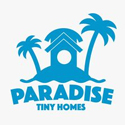



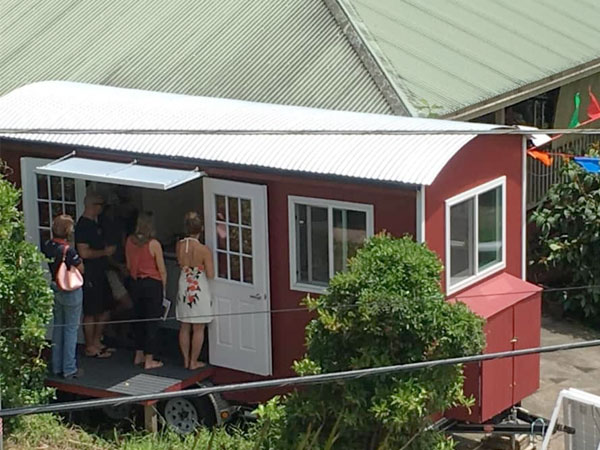
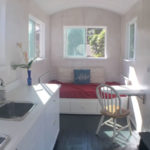
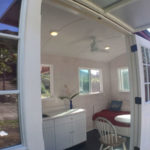
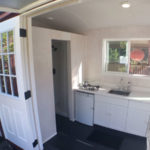
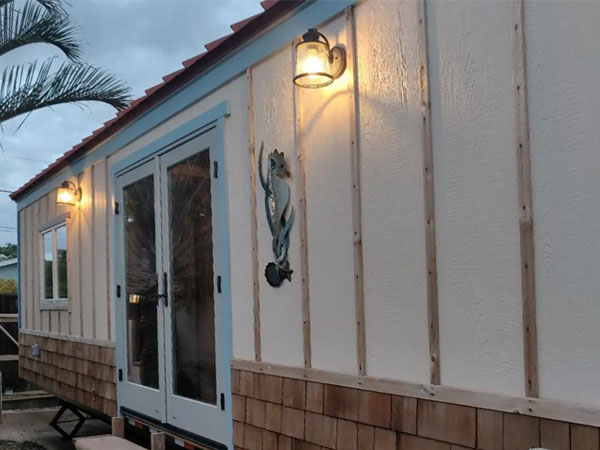
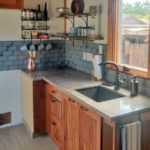

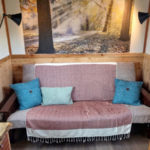
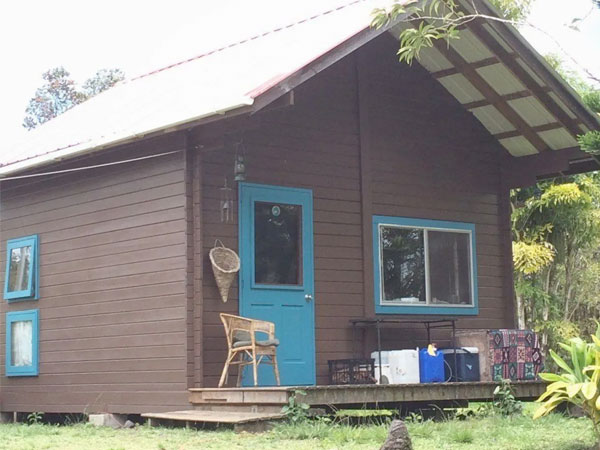
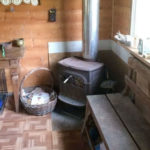
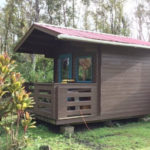
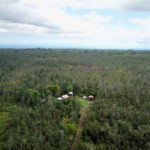
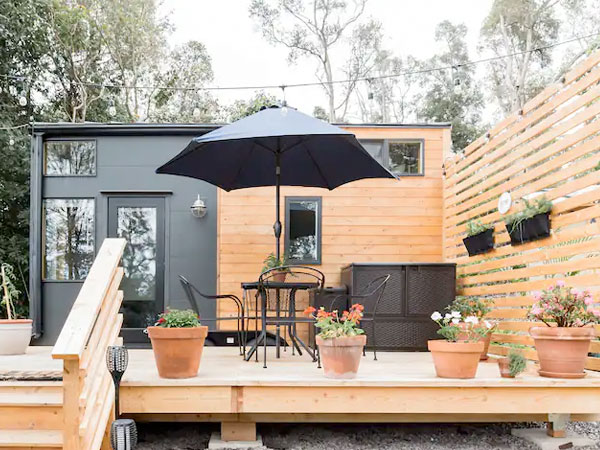



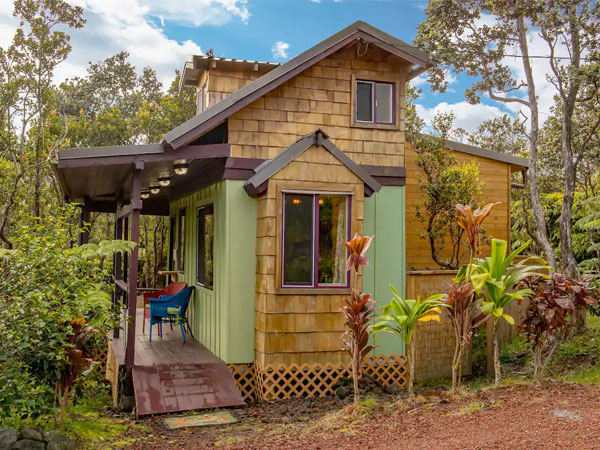
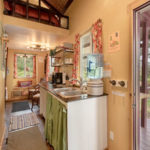


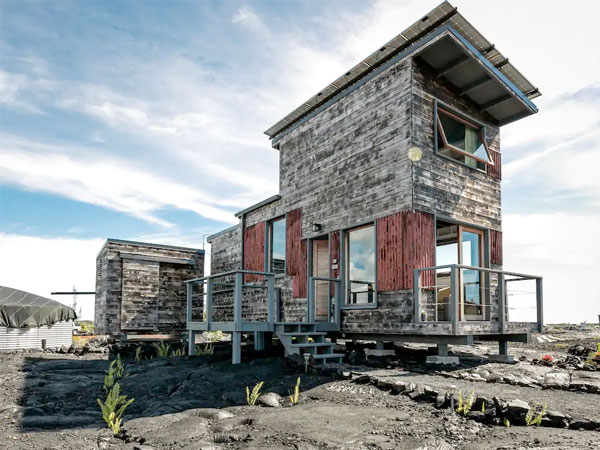



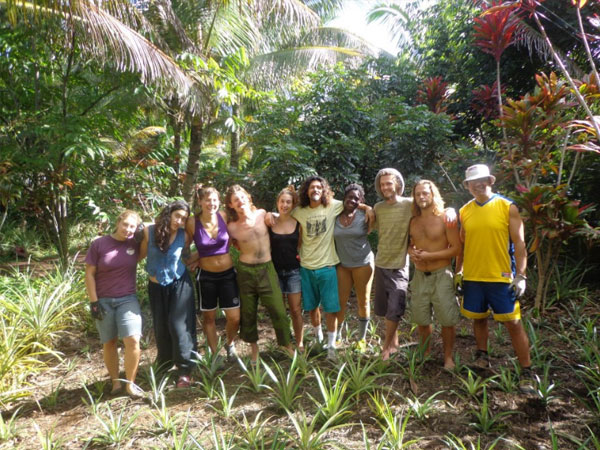
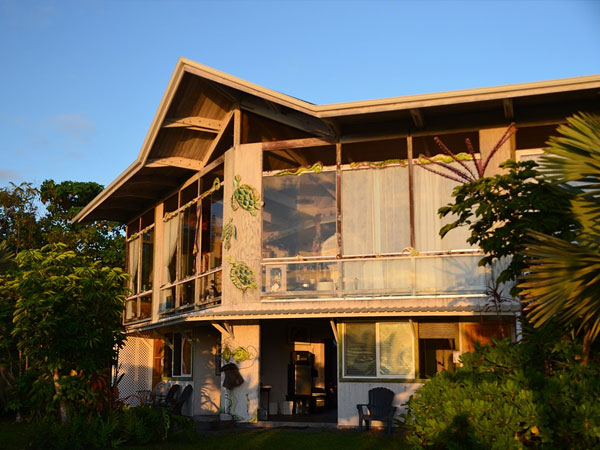
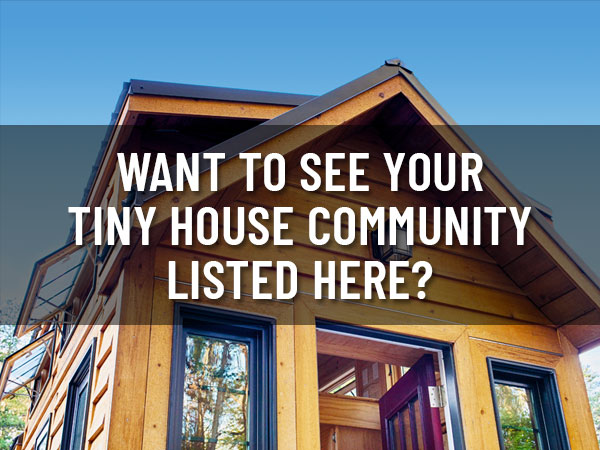
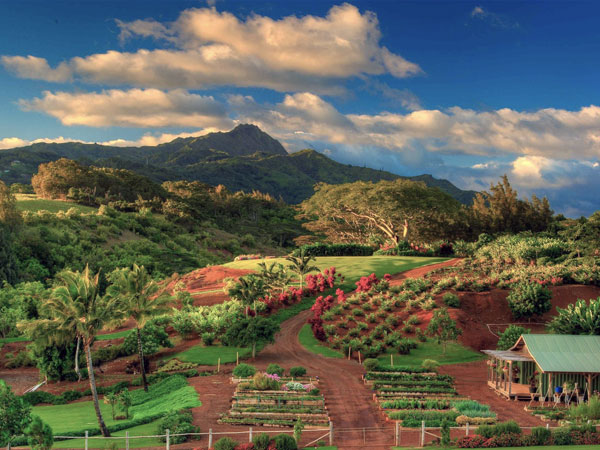
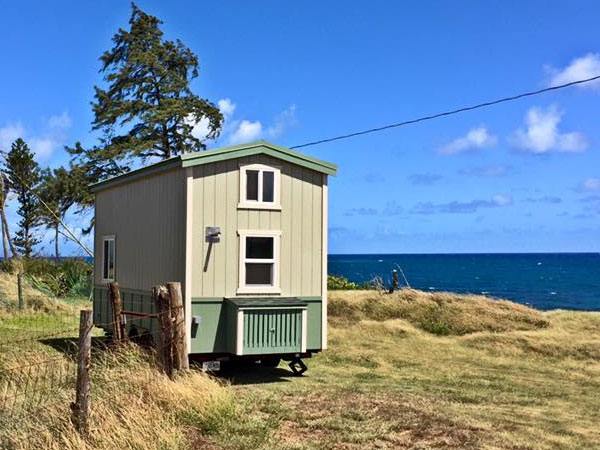
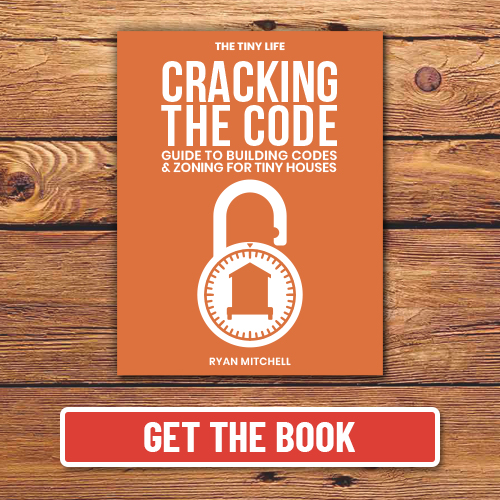
My wife are interested in a tiny house in Hawaii. Interested in one that has a foundation versus on a trailer. Budget of 150k. Can you help?
Mahalo nui loa for putting all of this together in one place!
Do you know of a service that comes to your property to register your tiny homes each year so you don’t have to drive/tow them to the registration locations? Like a Mobil registration service? I would love to have that info and contact for Honolulu. I have a few tiny homes on the North Shore. I added my email if you wouldn’t mind letting me know. Great site by the way! Super helpful.
I am looking for a tiny house community in hawaii. We have a tiny house floor plan that we would love to build on a community made for time homes.
If I rent out a tiny home (on wheels) is it considered a vacation rental (and subject to those laws)?
Please contact me regarding purchasing a house for our property on the island. I would like to come by tomorrow 5/30. Please advise ASAP. Mahalo!
Aloha,
Regarding shipping a tiny to HI. The roll on option with Matson is available and it runs about $17,000 for a fully built 26’x 8’6″ and 12.5′ tall trailer home from CA (either Long Beach or Oakland) you can also ship from Takoma. There are no restrictions on shipping a tiny of this size. You need to provide your measurements at time of booking. Always check to see what is accepted by the shipper before you purchase and plan on bringing to HI.
Ann